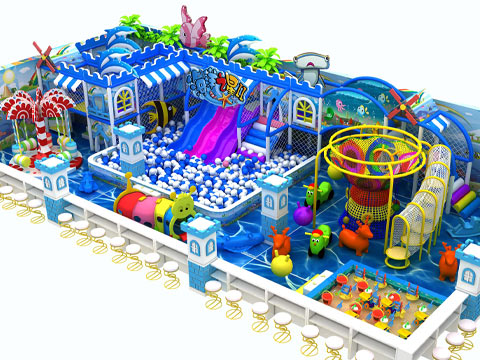Investing in indoor playground equipment demands careful budgeting and strategic planning. While durability and design are vital, affordability often decides whether the purchase will deliver real business benefits over time. Cost-effective choices are not synonymous with poor quality. In many cases, well-engineered Chinese indoor playground equipment (игровой лабиринт) provides dependable performance at a price that supports sustainable growth—especially when paired with crowd-pleasers like kiddie rides.
In today’s competitive amusement market, spending smart is just as important as installing imaginative attractions. The right pricing on equipment helps operators balance capital expenditure, maintain healthy cash flow, and keep ticket prices accessible to families. Below, we explore why affordability matters, how it influences guest satisfaction, and what makes budget-wise equipment a cornerstone of long-term success.
Balancing Expenditure With Reliable Performance
Owners often worry that saving money means compromising on quality. Modern manufacturers have shown that efficiency in design and production can reduce costs without cutting corners. Streamlined fabrication, robust yet economical materials, and standardized modules result in equipment that withstands daily use while remaining wallet-friendly. For shopping malls, community centers, and compact amusement venues, this balance allows for a professional-grade playground that does not exhaust the budget.

Design Choices That Keep Costs in Check
Selecting modular play elements, standard platform sizes, and commonly stocked components limits customization premiums and accelerates delivery. Thoughtful layouts reduce installation labor, and smart surface choices—such as high-wear flooring with easy-clean finishes—lower routine maintenance costs. Together, these decisions deliver long-term savings without diminishing the fun factor.
Why Purchase Price Shapes Business Outcomes
The initial price of equipment (оборудование для детского развлекательного центра) influences almost every other operational decision. Overspending can strain cash reserves, slow marketing efforts, and limit staffing. Reasonably priced playgrounds create room in the budget for staff training, digital promotion, and incremental upgrades that keep the venue feeling fresh. This balanced approach helps venues compete effectively while preserving profitability.
Protecting Margins With Smart Allocation
Lower upfront costs enable diversified attractions rather than one oversized centerpiece. By spreading investment across multiple play zones—soft play, climbing frames, interactive panels, and compact kiddie rides—operators serve a wider age range and encourage longer dwell time. More activities per square meter often translates into higher guest satisfaction and better spend per visit.
The Strategic Role of Kiddie Rides in Value Creation
Variety is essential for repeat visitation. Kiddie rides (детские аттракционы) are a cost-effective way to add motion-based excitement that appeals to younger children and complements soft play structures. These attractions typically boast straightforward maintenance, compact footprints, and strong visual appeal. Their approachable speed and gentle motion reassure parents while giving children a sense of independence and delight.
Small Footprint, Big Impact
Because many kiddie rides (купить аттракционы) require minimal space and power, they fit easily into underutilized corners or transition zones. This improves traffic flow, distributes crowds, and transforms dead spots into revenue-generating areas. When themed to match surrounding décor, they also elevate the overall aesthetic, making the venue more photogenic and shareable on social media.
Maximizing ROI Through Total Cost Awareness
Affordability is more than the sticker price. True value accounts for durability, warranty terms, availability of spare parts, and the simplicity of routine service. Equipment that demands frequent repairs may seem inexpensive at first but becomes costly over its lifespan. Reputable suppliers pair competitive pricing with robust after-sales support, ensuring uptime stays high and operational headaches remain low.
Maintenance Practices That Pay Off
Establishing a preventive maintenance schedule—daily visual checks, weekly fastener inspections, and monthly deep cleans—keeps equipment in top condition. Clear documentation for operators and a small inventory of common wear parts reduce downtime. These practices protect the initial investment and allow affordable equipment to perform like premium installations.
Pricing Flexibility That Welcomes More Families
When acquisition costs are manageable, operators can adopt guest-friendly pricing strategies: tiered day passes, off-peak discounts, and birthday bundles. Accessible pricing widens the audience, encouraging first-time visits and repeat trips. Families that perceive strong value are more likely to extend their stay, purchase snacks, and book parties—steady behaviors that strengthen revenue stability across seasons.
Loyalty Compounds Over Time
Positive value perception builds trust. Guests who feel they received a fair deal return more often, leave stronger reviews, and recommend the venue to friends. This organic advocacy lowers the cost of customer acquisition and turns affordability into a flywheel for long-term growth.
Scalable Growth Enabled by Smart Starts
Beginning with an affordable core layout gives operators room to scale. As revenue grows, they can add themed zones, sensory play panels, interactive projections, or additional kiddie rides without redesigning the entire space. This phased approach spreads capital outlays over time, keeps the experience fresh, and reduces the risk associated with a single, massive investment.
Upgrades That Keep the Experience Fresh
Seasonal overlays, small décor updates, and rotating mini-attractions maintain novelty at a low cost. Because the foundational equipment is cost-effective and reliable, incremental enhancements feel significant to guests while remaining financially prudent for the operator.
